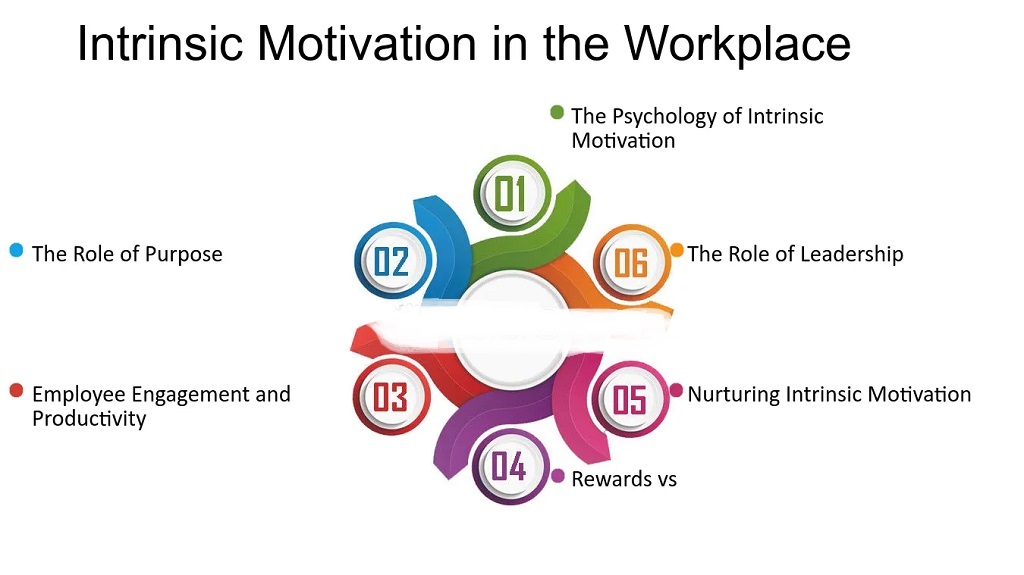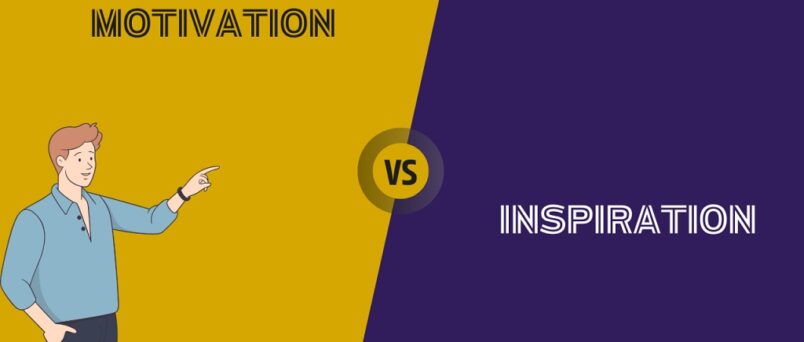The inquiry about what drives an individual delves into the underlying forces that propel them to take action. Frequently, people use the words “motivation” and “inspiration” interchangeably, but in reality, they stem from different origins and lead to distinct results. In this piece, I aim to examine the qualities of motivation vs inspiration that differentiate motivation from inspiration and highlight the significance of each in people’s lives.
Defining Core Terms in Motivation vs Inspiration

Before comparing motivation and inspiration, let’s define these key terms.
Motivation
Motivation refers to the internal or external factors that create the desire and willingness to perform a task or activity. For example, you might be motivated to go to work each day to earn money for your family. In this case, providing for your family encourages your efforts.
Inspiration
Inspiration is the influence that stimulates creative ideas, new perspectives, or emotions. We often describe inspiration as a “spark” or that “ah-ha” moment when a fresh insight dawns on us. For instance, viewing a beautiful landscape or a painting concept might inspire awe.
Key Differences
Now that we’ve defined motivation and inspiration, what distinguishes them? Here are some core differences.
| Category | Motivation | Inspiration |
| Origin | Comes from a place of need or deficiency | Stems from a place of contentment or abundance |
| Purpose | Pushes us toward practical results or external rewards | Pulls us inward to express ourselves creatively |
| Timeframe | Works on an ongoing, regular basis | Often sudden and temporary |
| Energy | Requires applied effort and self-discipline | Infuses enthusiasm, vitality, and passion |
| Examples | Studying hard to get good grades, Calling clients to earn a sales bonus | Feeling moved to paint after watching a sunset; Devising novel campaigns after hearing an innovative viral marketing example |
| Types | Intrinsic – fulfilling psychological needs, enabling flow states, supporting personal growth <br><br> Extrinsic – driven by external rewards, praise, evaluations | Universal themes – spark creativity, boost motivation, transform perspectives, and create emotional resonance. |
| Key Tips | Balance external rewards; Align activities with internal fulfillment | Seek goodness and truth as sources; Remain open to arriving unexpectedly |
Origin
Motivation and inspiration come from separate starting points. Motivation originates from a place of need or deficiency. For instance, you’re motivated to work because you need money. Inspiration stems from a place of contentment or abundance. You feel inspired to paint after admiring a sunset because you’re emotionally moved.
Purpose
Motivation pushes us toward a practical result or external reward. We’re motivated by the desire to gain something, like a promotion. Inspiration pulls us inward to express ourselves creatively. We feel inspired to write a poem to process emotions.
Timeframe
Motivation works continuously—we need regular motivation to meet daily responsibilities. Inspiration is often sudden and temporary—one inspiring moment may spur a flurry of creativity.
Energy
Motivation requires effort and discipline to push ourselves actively. We must motivate ourselves to wake up early, even when we’d rather sleep in. Inspiration infuses us with enthusiasm and vitality. New insights reenergize our passions.
Example
For example, your supervisor promises you a bonus if you boost sales figures by 50% over the next quarter. This incentive motivates you to call more clients and arrange more meetings. However, listening to an impactful song inspires you to devise innovative campaigns beyond essential outreach. Motivation helps you achieve a numerical goal, while inspiration stretches your creativity.
Motivation In Depth
It arises from two primary sources—intrinsic and extrinsic factors. Understanding motivation requires examining both areas.
Intrinsic Motivation
Intrinsic motivation comes from within. The desire to learn, grow, and actualize our talents drives inherent motivation. For instance, a passion for medicine may intrinsically motivate someone to pursue a career as a doctor. Here are the hallmarks of intrinsic motivation:
- Fulfillment of core psychological needs: Intrinsic motivation fulfills our needs for autonomy, mastery, and purpose. That activity becomes its reward when tasks align with our values, interests, and self-expression.
- Flow state: Intrinsically motivating activities allow us to enter immersive “flow” states by balancing our skills with increasing challenges. This dynamic engagement encourages us to sharpen our abilities.
- Personal growth: We each have innate urges to evolve into the best version of ourselves. Intrinsic motivation helps us expand knowledge and talents in line with internal benchmarks for success instead of external norms.
Extrinsic Motivation
Extrinsic motivation originates from outside influence through punishments, rewards, evaluations, or incentives. For example, a student might dislike math but be extrinsically motivated to study hard by the desire to score well on a test or gain admission to an elite university. Here are aspects of extrinsic motivation:
- Reward-driven: Extrinsic motivation drives actions to earn something physically tangible (money, status) or emotionally satisfying (praise, fame). We work to obtain separable outcomes instead of enjoying the process.
- Temporary: Rewards, points, grades, and bonuses eventually lose strength in continually motivating high performance. People rely more on renewed extrinsic factors than self-sustaining enjoyment.
- Inferior engagement: Extrinsic motivations can override intrinsic motivations and lower our sense of autonomy and purpose. This dynamic impacts well-being and weakens long-term motivation quality.
Inspiration In Depth
Inspiration shares common traits across contexts but manifests uniquely for each person. Here’s an overview of crucial inspiration themes:
Sparks Creative Drive
Inspiration activates our creative juices. Exposure to inspiring ideas, people, stories, and environments sparks novel connections that drive innovation. Studies reveal that inspiration precedes “aha moments” when radically new insights suddenly coalesce to solve problems.
For example, scientists might hit dead ends while researching cancer treatments using traditional approaches. However, attending a conference and hearing a bold new theory could trigger inspired ideas for experimenting with radical solutions.
Boosts Motivation
Inspiration is motivating in a renewable way by stimulating interest. Instead of depleting willpower through sheer discipline, inspiration makes activities more fascinating and enjoyable.
For instance, a social media strategist might grow bored optimizing the same tactics. But then, seeing an ingenious viral campaign re-ignites their motivation to brainstorm more captivating approaches.
Transformative Vision
Inspiration expands our perspective and vision to see things in transformative ways. Instead of staying stuck in limiting mindsets and assumptions, inspiration opens our eyes to exciting possibilities.
For example, some people view older people as burdens on society. However, someone might feel inspired by their grandmother’s adventurous volunteer work to see seniors as hidden heroes with wisdom to share. This shift can motivate advocacy for senior centers.
Emotional Resonance
Inspiration also moves us at an emotional level by touching our hearts and spirits. More than intellectual ideas, inspirational encounters impart a felt experience through sharing compelling narratives.
For instance, hearing first-hand stories from individuals overcoming adversity can infuse others with inspiration, courage, and purpose. This resonance inspires action fueled by both head and heart.
Optimizing Motivation & Inspiration

Both motivation and inspiration offer value. Motivation drives disciplined effort, while inspiration unlocks creativity. How do we engage their complementary strengths?
Balance Extrinsic
Carefully incorporate extrinsic motivations without over-reliance. For example, setting measured sales targets and bonuses can motivate productivity. However, they emphasize mastery and service over numbers themselves.
Seek Goodness
Inspiration thrives on truth, justice, beauty, and goodness. Seek virtuous sources of inspiration in nature, spirituality, character strengths, and works/people aiming to lift humanity. Start small by cultivating daily gratitude.
Foster Flow
Pursue work and hobbies matching your skills and allowance for advancing challenges to inspire engagement. Increase competencies over time to sustain flow states.
Remain Open
Inspiration arises unexpectedly when we’re open. Quiet, overactive minds attend to the present moment and welcome inspiration by releasing rigid agendas and assumptions. Surprise yourself.
Summarized Takeaways
In summary, motivation and inspiration operate differently. While motivation meets needs by driving disciplined effort through internal or external reinforcement, inspiration fills us with vitality by revealing novel possibilities that compel our interests.
Optimizing motivation requires balancing measured external rewards with activities aligned with internal fulfillment. Maximizing inspiration involves seeking truth, justice, and beauty while remaining open to unexpected insights through presence.
Aligning motivation and inspiration creates optimal conditions for achieving practical goals with expansive vision. With inspiration lightening motivation’s load, we unlock more significant human potential.
FAQs
Q1: Which is better, motivation or inspiration?
Neither motivation nor inspiration is inherently better. Both serve vital but distinct roles. Motivation provides the drive and effort to accomplish necessary responsibilities, while inspiration unlocks creativity, renewed vigor, and transformative vision. Harnessing their respective strengths together offers the best pathway.
Q2: How can I stay constantly motivated?
Striving for constant motivation generally backfires since all humans experience natural ups and downs in mood, energy, and focus. Instead, build sustainable motivation by balancing intrinsic motivations tied to purpose and flow with extrinsic factors applied in measured doses. Also, leverage inspired states when they arise to recharge motivation.
Q3: Where does inspiration come from?
Inspiration springs from various sources. We feel inspired after exposure to truth, beauty, justice, goodness, creative works, virtuous acts, natural wonders, spiritual insights, and stirring narratives. Inspiration can also arrive unexpectedly as “aha moments” when relaxing the conscious mind. Additionally, inspiration comes through practice—the more we create, the more inspired ideas emerge over time as skills improve.
Q4: How do I inspire others?
We inspire others through modeling creativity, showcasing goodness, sharing uplifting narratives, and spreading enthusiasm. Strive to think, speak, and act from a lens of possibility. Highlight stories revealing human potential. Express a genuine passion for your pursuits. When people directly experience possibility, optimism, and authenticity, it sparks inspiration contagiously.
Q5: Is inspiration or hard work more meaningful?
Inspiration and hard work operate cyclically. Inspiration fuels motivation, driving focused effort. Results from determined work inspire bolder visions that demand discipline to achieve. Without inspiration, hard work lacks direction and endurance. Without work, inspiration dissipates as a fleeting feeling. People maximize their potential through an inspired effort by building both capabilities.
Final Conclusion
Motivation and inspiration both provide value in directing human behavior toward meaningful outcomes. Though distinct forces, optimizing motivation vs inspiration allows achieving ambitious goals guided by expanding creativity and vision.
With motivation driving consistent effort and inspiration renewing passion, people enter a state of activated actualization, propelling their best work. Recognizing intrinsic motivation as a key component, the principles and insights above offer guideposts to access motivation and inspiration in our journeys, illustrating that pursuing a task for the sheer joy and satisfaction it brings is a prime example of intrinsic motivation

